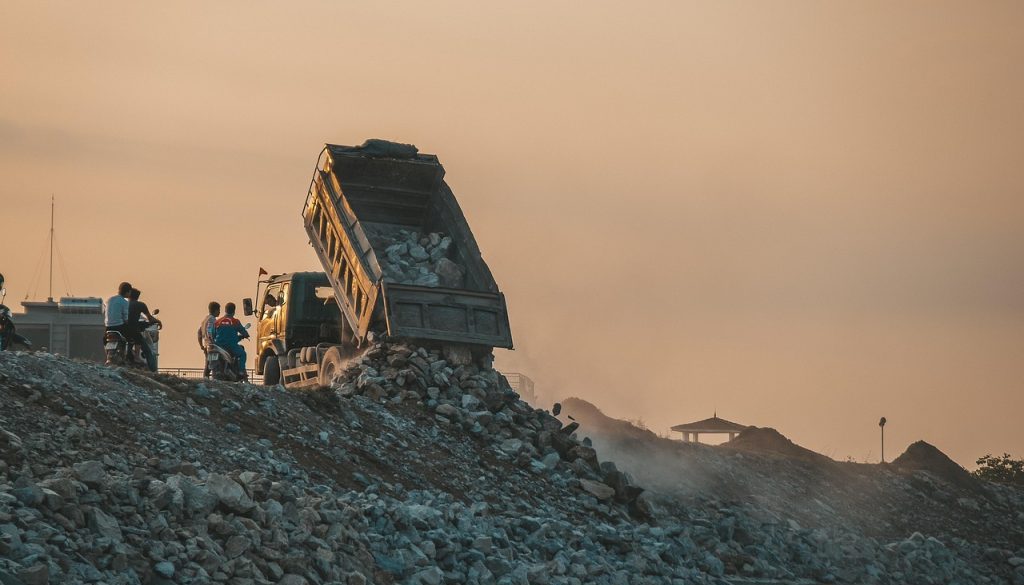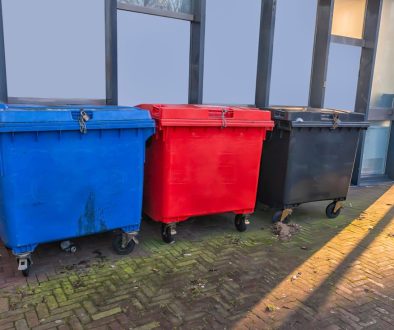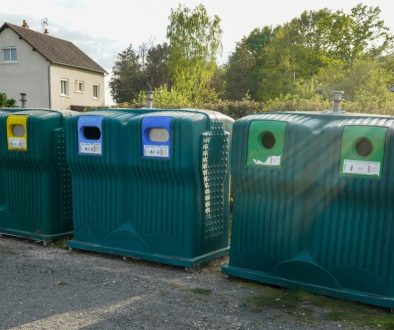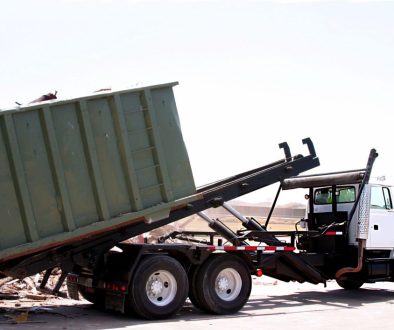Handling hazardous waste at home can be a daunting task, but it is essential for maintaining a safe living environment and protecting the environment. Hazardous waste includes items like batteries, paints, cleaning chemicals, and electronic devices. These materials contain dangerous substances that can pose risks to health and safety if not managed properly.
The first step in managing hazardous waste is identifying what qualifies as hazardous. Many household items contain chemicals that can be harmful if not disposed of correctly. For instance, batteries contain heavy metals, while old paint can have lead or other toxins. Recognising these items is crucial to protecting your home and the environment.
Proper storage is another key aspect of handling hazardous materials. Keeping these items in sturdy, sealed containers helps prevent accidents and contamination. Additionally, knowing the right disposal methods ensures that hazardous waste does not end up in landfills where it can cause environmental damage. Special disposal sites and community collection days are great resources for getting rid of these materials safely.
In this guide, we will cover how to identify different types of hazardous waste, proper storage techniques, safe disposal methods, and emergency procedures for hazardous waste incidents. Following these steps will help you handle hazardous waste responsibly and maintain a safe home and community.
Identifying Different Types of Hazardous Waste
Understanding the different types of hazardous waste is essential for proper handling and disposal. Hazardous waste can cause harm to human health and the environment, so identifying it correctly is the first step. Here’s a simple breakdown of the main categories:
1. Chemical Waste: This includes household cleaners, paints, pesticides, and solvents. These chemicals can be harmful if inhaled, ingested, or come into contact with skin.
2. Electronic Waste: Items like old computers, mobile phones, and batteries fall into this category. They contain heavy metals and other toxic substances that need special disposal methods.
3. Biological Waste: This is mostly medical waste, including used bandages, needles, and expired medications. Proper disposal prevents the spread of infections and contamination.
4. Asbestos: Found in older buildings, asbestos fibres are extremely hazardous when inhaled. It requires specialised handling and disposal.
5. Flammable Materials: Petrol, kerosene, and other flammable liquids can pose fire and explosion risks and need careful storage and disposal.
6. Industrial Waste: This category includes leftover materials from manufacturing processes, such as oils, sludges, and chemical by-products.
Identifying the type of hazardous waste is crucial for determining the appropriate handling and disposal methods. Proper identification helps prevent accidents and ensures that the waste is managed in an environmentally safe manner.
Proper Storage Techniques for Hazardous Materials
Storing hazardous materials safely at home prevents accidents and exposure to harmful substances. Proper storage techniques make handling these materials less risky and ensure they remain contained until disposed of correctly. Here are some key tips for safe storage:
1. Use Original Containers: Always keep hazardous materials in their original containers. The original labels contain crucial information about the contents and any hazards.
2. Clearly Label All Containers: If you must transfer materials to new containers, label them clearly with the name of the substance and any hazards associated with it. This helps anyone handling the materials know what they’re dealing with.
3. Store in a Cool, Dry Place: Many hazardous materials can react badly to heat or moisture. Store them in a cool, dry place, away from direct sunlight and sources of heat.
4. Secure the Area: Keep hazardous materials in a locked cabinet or shed, out of reach of children and pets. Ensure the storage area is well-ventilated to prevent the build-up of fumes.
5. Do Not Mix Different Materials: Never store different types of hazardous materials together, as they might react and cause dangerous chemical reactions. Keep flammables away from corrosives and oxidisers.
6. Regularly Inspect Containers: Check storage containers regularly for signs of leaks, rust, or damage. Replace any damaged containers immediately to prevent spills or accidents.
By following these storage techniques, you help ensure that hazardous materials are kept safe and secure, reducing the risk of harm to your home and family. Proper storage is a vital step in responsible hazardous waste management.
Safe Disposal Methods for Hazardous Waste
Safe disposal of hazardous waste is essential to protect both the environment and human health. It’s important to follow the correct procedures to ensure that hazardous materials do not contaminate the surroundings. Here are some effective methods for disposing of hazardous waste:
1. Household Hazardous Waste Collection: Many local authorities offer special collection days for hazardous household waste. Check with your council to find out when and where you can drop off items like old paints, pesticides, and batteries.
2. Designated Drop-off Centres: Some areas have specific drop-off centres where you can take hazardous waste for safe disposal. These centres are equipped to handle various types of hazardous materials safely.
3. Business Disposal Services: If you run a business that generates hazardous waste, you may need to use a professional disposal service. These companies have the expertise and equipment to dispose of hazardous waste in compliance with regulations.
4. Return to Retailers: Some retailers offer take-back programmes for certain hazardous items, such as used electronics, batteries, and printer cartridges. Check with stores to see if they participate in such schemes.
5. Chemical Neutralisation: Certain hazardous chemicals can be neutralised to make them safer for disposal. However, this process should only be done by professionals who understand the chemical properties and the appropriate safety measures.
6. Incineration: Some types of hazardous waste can be incinerated at high temperatures in special facilities designed to handle toxic emissions. This method effectively reduces the volume of the waste and destroys harmful chemicals.
Always follow local guidelines and regulations when disposing of hazardous waste. Improper disposal can lead to serious environmental damage and pose health risks to the community.
Emergency Procedures for Hazardous Waste Incidents
Despite best efforts, accidents involving hazardous waste can still happen. Knowing the proper emergency procedures helps minimise harm and contain the situation. Here are the key steps to take during a hazardous waste incident:
1. Immediate Evacuation: Ensure the immediate area is evacuated if there is a spill or exposure to hazardous materials. Keep everyone at a safe distance and away from the contaminated zone.
2. Contain the Spill: If it is safe to do so, try to contain the spill to prevent it from spreading. Use absorbent materials like sand or cat litter to soak up liquids, and cover the spill with plastic sheeting if possible.
3. Ventilate the Area: Proper ventilation can help disperse harmful fumes. Open windows and doors to allow fresh air to circulate, but avoid using fans that could spread contaminants.
4. Use Personal Protective Equipment (PPE): If dealing with the spill directly, wear appropriate PPE, such as gloves, masks, and goggles, to protect yourself from exposure.
5. Report the Incident: Contact your local environmental authority or hazardous waste management service to report the incident. Provide details about the type and quantity of the hazardous material involved.
6. Clean-up Procedures: Follow the specific clean-up procedures recommended by professionals. This may include neutralising chemicals, safely removing contaminated materials, and properly disposing of any clean-up waste.
7. Medical Attention: Seek medical attention immediately if anyone has been exposed to hazardous materials. Provide first responders with information about the substance involved.
By following these emergency procedures, you can help control hazardous waste incidents and reduce the risk of injury or environmental contamination.
Conclusion
Handling hazardous waste responsibly is crucial for protecting our health and the environment. Identifying, storing, and disposing of hazardous materials correctly helps prevent accidents and ensures that these materials are managed safely. Knowing emergency procedures further enhances our ability to handle incidents effectively.
At Enviro Skip Hire, we understand the importance of proper hazardous waste management. Our services are designed to help you dispose of hazardous materials safely and in compliance with regulations. Whether you need a skip for household waste or assistance with more specialised disposal needs, we are here to support you.
Take the next step towards safer waste management by contacting Enviro Skip Hire today. Learn more about how our skip hire in Cheshire can help you manage your hazardous waste responsibly.




